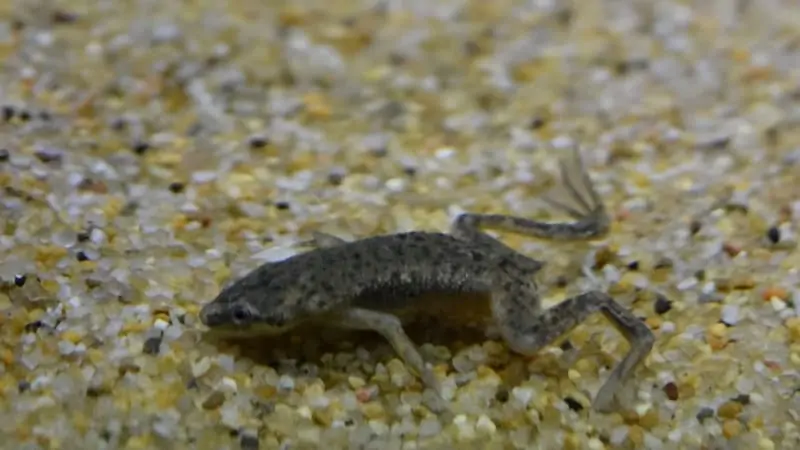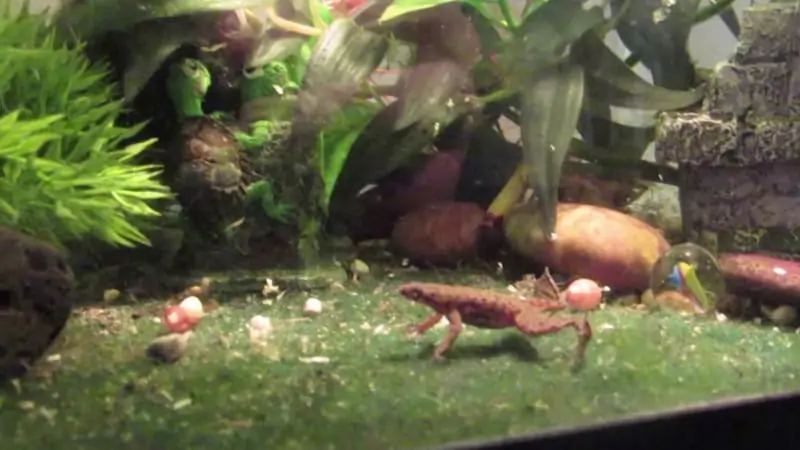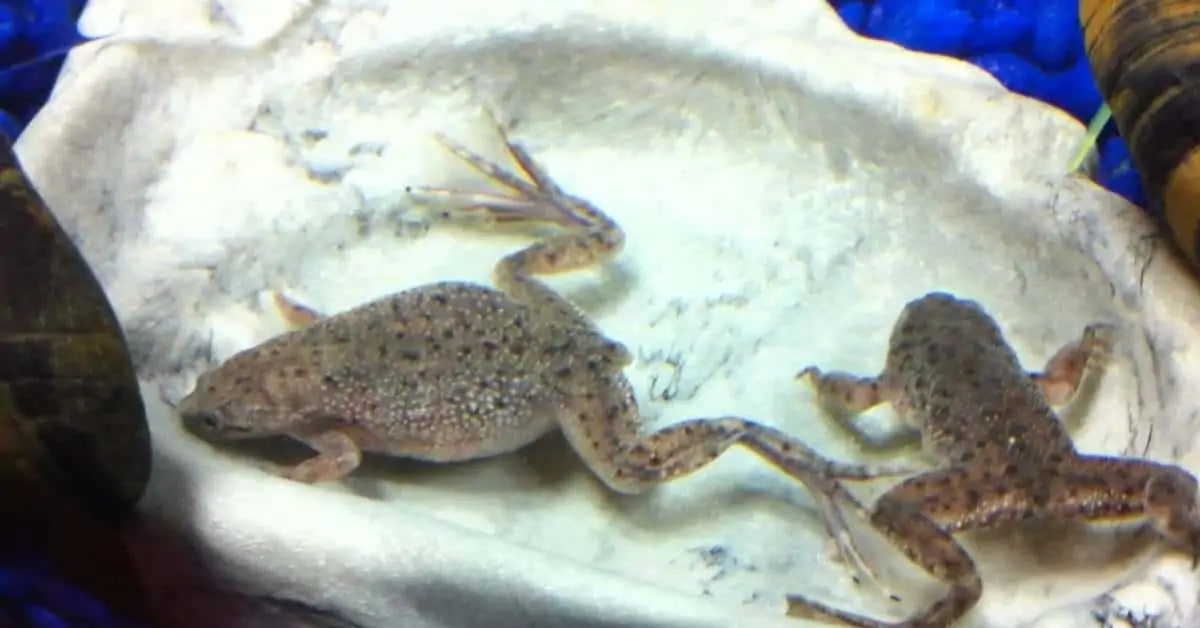Traveling with your pet is already problematic, but there’s something even more problematic than that: traveling with an exotic pet. Bringing your dog along on a road trip is different from traveling with a frog. But how do you even transport an African dwarf frog without endangering them?
African dwarf frogs can be transported in an opaque container that’s small enough to carry the frog. Since frogs can’t regulate their temperature properly, it is important to keep them warm using the car’s heater. If that’s not an option, you can use hot water bottles, hand warmers, or a DIY warmer.
If keeping an African dwarf frog seems like a lot of work, wait until you have to transport them. You must find a way to keep their temperature stable throughout the ride while keeping them in a safe and convenient container. If that seems like too much work, this article will help you out.
What Do You Use to Transport a Frog?

The ideal container for transporting an African dwarf frog will depend on the specific details of the trip. A flight will have different requirements from a road trip, and you’ll need a different kind of crate on a two-hour trip than on a ten-hour trip.
However, some requirements carry onto every condition, regardless of the mode of transport, temperature, or the expected transport duration.
For most short trips, like to the veterinarian, a plastic holding tank or a Tupperware container will do. You want to make sure that the container is just small enough to carry the frog, as larger containers are a hassle to warm up.
It’s not important to transport the frogs in water as they don’t have breathing gills. However, it’s optimal to keep them exposed to water throughout the journey. To achieve this, you can line the surface of the traveling container with a damp paper towel to keep the cage humid.
If you set up your cage properly, you should be able to transport your African dwarf frogs safely. However, you should monitor them constantly after the journey as they don’t tolerate trips as well as humans.
How Do You Transport African Dwarf Frogs?
Transporting your African dwarf frog is a lot more than simply choosing the right container. You must also actively try to keep your frog or frogs safe to have a relatively safe trip. If you have no previous experience transporting frogs, this may seem like an uphill task.
If you find the entire idea of transporting an African dwarf frog quite tiring, I can help. Here are some tips to help you travel with your frog safely without having to shell out thousands to a pet relocation agency.
Here are some tips and guidelines that may be helpful for anyone trying to transport African dwarf frogs quickly, safely, and conveniently.
1. Warm your car to the appropriate temperatures for the frog

If the trip falls on a naturally cold day, you may have to warm your car before introducing your frog to it. Since frogs are cold-blooded, they lack the natural ability to regulate their temperatures. If your car’s temperature is too cold, it may force the frog into hibernation.
The optimal temperature for an African dead frog is around 70 to 85 degrees Fahrenheit, which is about 22 to 28 degrees Celsius. If your car’s temperature is either much higher or much lower, you should probably warm it up.
If it’s a very cold day, you must also try to maintain the temperature throughout the trip. This makes it even more tasks, as you have to ensure your frog’s area doesn’t go way above the recommended figures.
2. Line the carrier with a wet substrate (i.e. damp paper towels)
All frogs need a decently humid environment, but not necessarily a wet one. Unlike what the internet may have you believe, you don’t need to half-fill your frog’s carrier with water before embarking on your trip.
Instead, you can use a wet substrate like paper towels to keep your frog hydrated throughout the trip. While other substrates also work well, why try something else when the usual solution is cheaply available.
3. Cover the carrier with a blanket
One of the conditions you must maintain for your pet African dwarf frog throughout the journey is warmth. One of the best ways to keep your frogs warm is by covering the entire crate housing the frog with a blanket.
Your frogs should be fine with a blanket over them as long as the blanket is breathable. The blanket will help conserve the heat by preventing their escape while emulating the frog’s natural environment by making the frog’s environment darker.
4. Use different warming hacks

There are many hacks to help keep your frog warm if your car doesn’t have a reliable cooler. You should use them with care, however, as you risk overheating your frog by using non-convention heating solutions that are generally hard to control.
One common way to keep frogs warm is by using a hot water bottle. You only have to fill it with comfortably hot water, and it can help warm up your frog for several hours.
You can also use hand warmers if you’re on a longer trip, as a hot water bottle doesn’t last as long. However, there are some safety hazards with hand warmers, and you should only use them when you run out of options.
A safer but less effective alternative is a DIY African dwarf frog-warmer that you can make using some rice and a sock. You only have to half fill the sock with rice and knot it to prevent the rice from escaping. You can then put the sock in the microwave until it’s hot enough to use as a hand-warmer.
While your “hand sock” won’t be as effective or as long-lasting as a dedicated hand warmer, it’s a great place to start. Just ensure you’re keeping track of the temperatures to avoid burning up your African dwarf frog.

